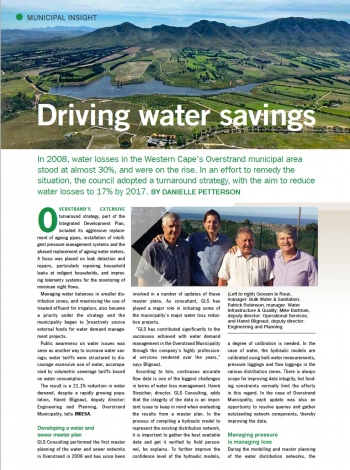Driving water savings
In 2008, water losses in the Western Cape’s Overstrand municipal area stood at almost 30%, and were on the rise. In an effort to remedy the situation, the council adopted a turnaround strategy, with the aim to reduce water losses to 17% by 2017.
Overstrand’s extensive turnaround strategy, part of the Integrated Development Plan, included its aggressive replacement of ageing pipes, installation of intelligent pressure management systems and the phased replacement of ageing water meters. A focus was placed on leak detection and repairs, particularly repairing household leaks at indigent households, and improving telemetry systems for the monitoring of minimum night flows. Managing water balances in smaller distribution zones, and maximising the use of treated effluent for irrigation, also became a priority under the strategy and the municipality began to proactively source external funds for water demand management projects. Public awareness on water issues was seen as another way to increase water savings; water tariffs were structured to discourage excessive use of water, accompanied by volumetric sewerage tariffs based on water consumption. The result is a 21.1% reduction in water demand, despite a rapidly growing population, Hanré Blignaut, deputy director: Engineering and Planning, Overstrand Municipality, tells IMIESA.
Read more in PDF linked on right.

